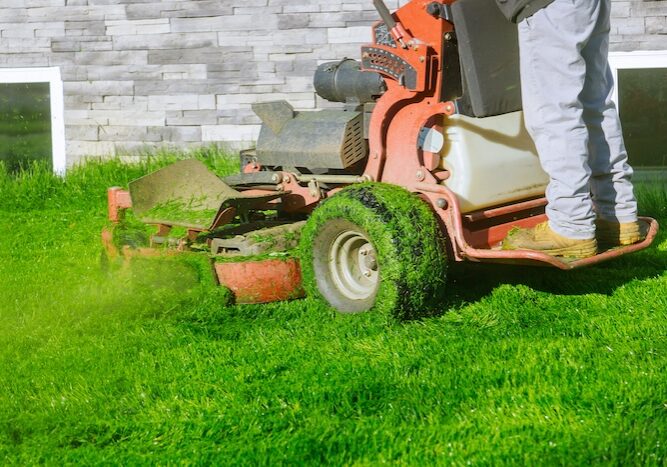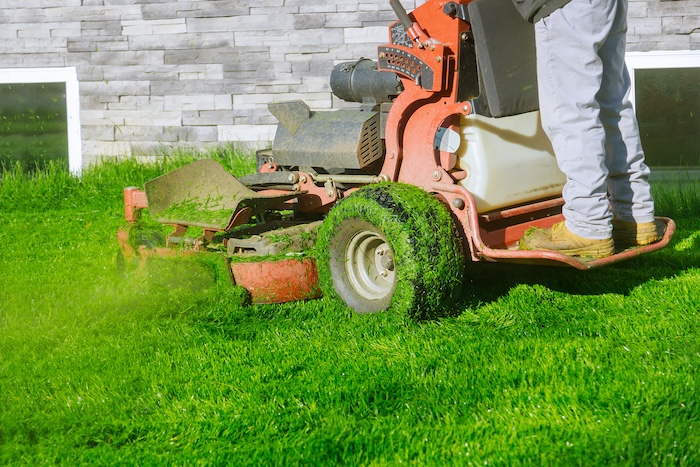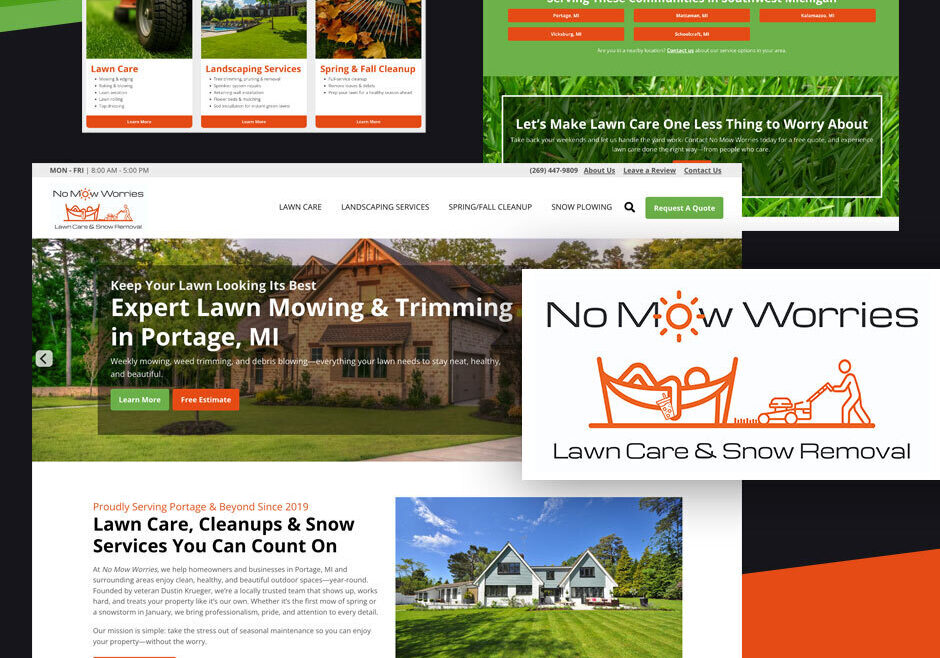The Best Ways to Make Landscaping Profitable

Is your landscaping business bringing in revenue but struggling to turn a real profit? You’re not alone. Many landscaping professionals work long hours, take on more clients, and still find their bottom line falling short. The key isn’t just working harder—it’s working smarter. By refining your profit strategies, optimizing operations, and focusing on the most profitable landscaping services, you can make landscaping truly profitable while reducing inefficiencies and boosting long-term growth.

How to Grow Your Landscaping Business and Increase Profitability
If you feel like you’re constantly working harder—selling more, taking on bigger jobs, and stretching your team to the limit—yet still struggling to turn a solid profit, it’s time to rethink your landscaping business profit strategy.
The good news? Profitability isn’t just about working harder—it’s about working smarter. Below, we’ll break down seven proven strategies to help you make landscaping profitable while streamlining your operations for long-term success.
1) Know Your Costs And Profit Margins
One of the biggest reasons landscaping businesses struggle with profitability is miscalculating costs. Many companies set their prices based on what competitors charge or rely on rough estimates rather than actual cost analysis. This can lead to underquoting jobs and shrinking profit margins.
Every project’s profit potential is determined before the work even begins—when you set the price. To ensure every job contributes to your bottom line, you need precise job costing, which includes:
- Labor & Materials – Wages for crew members and subcontractors, costs of plants, mulch, pavers, and other materials.
- Hidden Costs – Drive time, fuel, insurance, employee benefits, licensing fees, and unexpected job site expenses.
- Equipment Depreciation – Mowers, trucks, trailers, and tools lose value over time. If you don’t account for wear and tear, you may find yourself replacing expensive equipment without a financial cushion.
- Overhead Costs – Office rent, software subscriptions, marketing costs, and administrative salaries all impact your pricing model.
Many landscaping business owners focus only on direct costs like labor and materials, forgetting about indirect costs that eat into profits. For example, if you’re pricing a job at $5,000 but overlooking fuel costs, equipment wear, and administrative time, your real profit may be far lower than expected.
To improve profitability, track every cost associated with a job and calculate your ideal markup percentage. A solid pricing strategy ensures that you not only cover operating expenses but also generate a good profit margin.
If you’re unsure how to implement job costing, check out our in-depth guide: Lawn Care Business Job Costing can Make or Break Your Business.
2) Perform Post-Job Analysis to Maximize Profitability
One of the biggest reasons landscaping businesses struggle with profitability is mismanaging costs and failing to analyze job performance. While accurate job costing before a project begins is essential, tracking actual costs after the job is complete is just as critical.
A post-job analysis allows you to compare estimated costs versus actual expenses, helping you refine pricing strategies, improve efficiency, and prevent profit loss on future jobs.
After completing a job, take time to review key financial factors. Were labor hours accurately estimated? Did material costs align with your projections? Were there unexpected expenses, such as extra fuel costs, last-minute client requests, or weather-related delays? Even small discrepancies in these areas can erode your profit margin over time.
If your landscaping projects frequently run over budget, look for patterns. If labor costs are consistently higher than projected, you may need to adjust estimates or improve crew productivity. If material costs fluctuate, explore bulk purchasing or supplier discounts.
Post-job reviews also help identify which services are most profitable. Some landscaping jobs bring higher returns with lower costs, while others may require too much labor or equipment investment to be worth offering. By analyzing past job performance, you can refine your service offerings and pricing strategy to ensure long-term profitability.
Many landscaping businesses focus on securing more contracts but fail to analyze profitability after the work is done. Making post-job analysis a regular habit will help you spot inefficiencies and increase profit margins with every project.
3) Schedule More Lawn Care Jobs Per Day Without Overloading Your Crew
Increasing the number of jobs your landscaping company completes each day can significantly boost profitability, but it’s not just about squeezing in more work—it’s about efficient scheduling and resource management.
A well-planned schedule helps maximize labor and time while minimizing costly downtime, such as excessive drive time, idle crew members, and inefficient equipment use. The key is finding the right balance between maintaining quality service and increasing job volume.
Optimize Scheduling for Maximum Efficiency
One of the biggest time wasters for landscaping businesses is excessive travel between job sites. Your profitability takes a hit if your crew is spending too much time on the road instead of working. To reduce inefficiencies:
- Group jobs by location – Reduce unnecessary drive time by scheduling jobs in the same area on the same day.
- Consider job size – Mix smaller, quicker jobs with larger projects to avoid bottlenecks in your daily workflow.
- Streamline setup and teardown – Minimize time spent loading and unloading equipment by organizing tools efficiently and assigning clear roles to each crew member.
Use Scheduling Software to Improve Profitability
Investing in landscape crew scheduling software can help you make data-driven scheduling decisions. These tools allow you to:
- Optimize routes to reduce fuel costs and drive time.
- Allocate the right crew and equipment for each job, preventing unnecessary delays.
- Automate scheduling to adjust quickly for weather delays or last-minute changes.
By strategically planning daily schedules, you can fit more jobs into the workday without overwhelming your crew or sacrificing service quality. Over time, these small adjustments can lead to higher revenue, lower operational costs, and a more profitable landscaping business.
4) Minimize Drive Time To Cut Costs and Increase Efficiency
Excessive travel between job sites is one of the biggest hidden costs for landscaping businesses. Every extra mile adds to fuel expenses, vehicle wear and tear, and lost productivity. Reducing drive time not only lowers costs but also allows crews to complete more jobs in a day, increasing overall profitability.
One of the best ways to minimize drive time is by grouping jobs by location. Instead of sending crews back and forth across town, schedule jobs in clusters so teams can move efficiently from one site to the next. This simple adjustment can significantly reduce fuel expenses and improve job completion rates.
Another strategy is to optimize routes based on real-time traffic patterns. Poorly planned travel routes can lead to unnecessary delays, increasing the time spent on the road instead of on billable work. Using mapping tools or scheduling software can help identify the most efficient routes for each day’s schedule.
For long-term efficiency, consider implementing a scheduling system that automates route planning. These tools analyze job locations, crew availability, and client requests to create optimized schedules without the need for manual adjustments. This helps balance efficiency with customer expectations while eliminating unnecessary drive time.
By making small adjustments to job scheduling and travel planning, landscaping businesses can significantly reduce costs and increase overall profitability without adding extra work hours or resources.
5) Don’t Let Inventory Sit Too Long
Excess inventory in your warehouse is tied-up capital—funds that could be used to grow your landscaping business instead of sitting on shelves. Every material, tool, or supply that remains unused for long periods represents money that isn’t actively contributing to your bottom line. Managing inventory efficiently ensures that your cash flow stays strong and your business operates with minimal waste.
Instead of stockpiling materials without a clear plan, business owners should aim to hold inventory for as short a period as possible. This means purchasing materials based on actual demand rather than assumptions, reducing unnecessary bulk orders, and keeping a close eye on turnover rates.
One of the best ways to manage inventory effectively is by implementing a supply chain management system that tracks material usage in real time. Such a system allows business owners to see exactly what is needed for confirmed jobs while also forecasting upcoming project requirements. This level of visibility helps prevent over-purchasing, reduces storage costs, and ensures that the right materials are always on hand when needed.
Beyond tracking day-to-day inventory, a well-structured supply chain system provides valuable insights into purchasing trends. By analyzing past usage, businesses can make smarter buying decisions, negotiate better deals with suppliers, and avoid the costly mistake of holding onto materials that may become obsolete or difficult to store.
By optimizing inventory turnover and making data-driven purchasing decisions, landscaping business owners can improve cash flow, reduce waste, and increase overall profitability—all without sacrificing the materials needed to complete jobs on time.
6) Don’t Take Previous Clients for Granted
Acquiring new customers is one of the biggest expenses for any landscaping business, from marketing costs to time spent on consultations and estimates. However, repeat customers are far more profitable since they don’t come with the same acquisition costs. The more services you can provide to an existing client, the higher your profit margins on those projects.
Rather than waiting for past clients to reach out when they need landscaping services again, be proactive. A strategic follow-up system can help maintain customer relationships, fill your schedule earlier in the season, and increase long-term profitability.
One of the easiest ways to encourage repeat business is by sending reminders before peak landscaping seasons. A simple message reminding homeowners or property managers to book seasonal services can make a big difference. Thanking them for their past business and offering loyalty incentives—such as a small discount for early booking or bundled services—can also strengthen retention.
This type of outreach can be time-consuming if done manually, but with the Arborgold bulk batch renewal system, reaching out to previous clients to initiate the renewal process can be quick and easy. Instead of making individual calls or emails, you can efficiently send renewal reminders in bulk, ensuring that your existing customers stay engaged while reducing the time spent on customer follow-ups.
Prioritizing previous clients not only improves scheduling consistency but also increases overall landscaping business profit by securing jobs that don’t require additional marketing or sales efforts.
7) Upsell Existing Lawn Care Business Clients
The easiest customers to sell to are the ones you’ve already won. If your clients have had a positive experience with your landscaping services, they are more likely to trust your recommendations for additional work. Upselling existing clients is one of the most effective ways to increase profits without the extra costs associated with acquiring new customers.
Instead of focusing solely on bringing in new leads, look for ways to offer additional services to your current customers. Enhancements like seasonal fertilization, irrigation system maintenance, landscape lighting, or pest control can add value while increasing your total revenue per client. These small upsells can make a significant impact on your bottom line when applied across multiple customers.
How to Upsell Without Being Pushy
Upselling should always feel like a value-add rather than a sales pitch. The best way to do this is by offering personalized recommendations. Use your client database to review past services and identify natural upgrades or complementary services. For example, if a customer previously had sod installed, they may benefit from an irrigation system or routine lawn treatments.
A CRM with integrated marketing tools can simplify this process. Automated email campaigns can target customers based on their service history and send timely, relevant offers. For example, clients who had fall cleanup services last year can receive a reminder email about scheduling spring landscaping maintenance. By using technology to filter customers by past services and send personalized upsell offers, you can boost revenue while maintaining a seamless client experience.
When done correctly, upselling improves customer satisfaction by offering solutions tailored to their needs—while increasing your landscaping business profit without the expense of acquiring new leads.
Get Started with Arborgold
Arborgold’s landscape management software helps landscaping businesses streamline operations, reduce costs, and increase profits with features like automated job scheduling, route optimization, inventory tracking, and bulk batch renewals. Whether you’re looking to improve efficiency or grow your client base, Arborgold gives you the tools to make it happen. Click “Take a Tour of Arborgold” below to start your free trial today.
Share this resource



